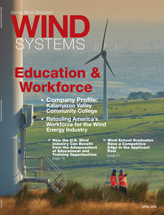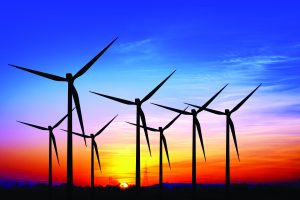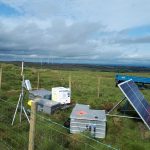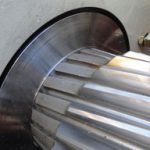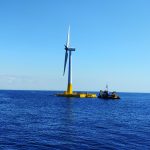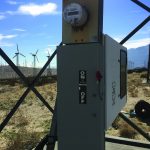There is a broad range of professions that make up the workforce needed to drive the wind energy industry forward, including jobs in the manufacturing of wind turbines, engineering, and a range of support roles relating to daily operations, including marketing and community liaison work. A wide variety of training is required for all of these different roles, from initial background qualifications that may include a specific college degree or certification to conversion courses for someone coming into the sector from another discipline, as well as ongoing training for staff throughout their careers.
The wind industries in the United States and Europe both require a highly skilled workforce for their continuing development and expansion. Some European countries have wind turbine manufacturing industries that they have built up and developed over several decades, and many are installing large numbers of turbines and providing training programs and degrees at educational institutions that equip the workforce with the skills necessary to meet the current and future needs of the industry. A similar trend has developed in the U.S. where there are several manufacturing bases and states with a large number of turbines being installed. Educational support has also developed quickly in wind-rich states like Texas, where there is a growing need for a trained workforce to meet the needs of the industry.
According to the American Wind Energy Association (AWEA), more than 80,000 Americans are employed in the wind industry and related fields. While the development of the wind energy industry is on the rise in the U.S., the skills gap risks putting that growth in jeopardy if there is a shortage of skilled workers who are readily available to meet the industry’s needs. This, combined with an aging workforce, means that an enhanced education pipeline will be crucial to ensure that there are well-trained, qualified workers to sustain the industry.
One way these needs could be addressed is by looking at how European countries have developed educational opportunities to support the wind sector and applying similar principles to the U.S. wind market. The United Kingdom can provide relevant insights that may prove helpful to the American wind industry.
The U.K. is currently facing a decrease in the number of available, qualified engineers and technicians that are required to sustain and advance the industry.
The government addressed this shortage with an increased investment in apprenticeships and a flexible range of training options available for new applicants who are entering the industry. Companies are also investing heavily in on-the-job training for their existing staff to build on and increase their skillsets. For example, wind turbine technicians are one of the primary groups in the wind industry and are responsible for ensuring turbine equipment operates efficiently. Organizations such as the European Energy Centre (EEC) offer a variety of curricula for those looking to pursue careers as wind technicians. The EEC is an accredited center and offers qualification courses, such as the Wind Power course, where individuals learn how to install, maintain, and repair wind turbines. Additionally, courses like Modern Apprenticeships in Wind Turbine Operation and Maintenance as well as Wind Turbine Installation and Commissioning are also available in the U.K. This range of courses combined with relevant hands-on experience yields a workforce that is equipped with a broad range of qualifications and can ensure a large enough workforce is available.
More highly technical, specialized roles are also required for a range of engineering fields across the industry, including aerospace, civil, electrical, electronics, environmental, industrial, materials, and mechanical. An undergraduate engineering degree is typically a prerequisite for this type of employment, along with relevant work experience. These qualifications are available at a range of universities across the U.K., and students often participate in an internship or cooperative program as part of their undergraduate studies.
This flexible and broad range of avenues for applicants to become suitably trained is helping ensure that sufficient numbers of qualified personnel are available to work in the global wind energy industry. It has also resulted in a virtuous circle of initial educational investment by the public sector, which has led to companies investing in the educational development of their workforce. Siemens, for example, built a wind power training center in Newcastle Upon Tyne — a university city on the River Tyne in northeast England — and a global center for offshore grid connections in Manchester. The company is also sponsoring research in renewables at various U.K. universities and is currently constructing a manufacturing plant in Hull to support the offshore wind industry.
Some countries in Europe have established wind turbine manufacturing industries that require skilled technicians and a great deal of careful planning to develop the supply chains, infrastructure, and training facilities necessary to sustain the industry. While the U.K. does not have a history of technological advancements that are required to develop an indigenous manufacturing base, collaborations with private companies may result in the development of such a system. An established policy regime, commitments from government, and known projections for construction have led to the development of a training infrastructure and the facilities that can ensure the long-term viability of the industry. For example, the U.K. offers training facilities that were developed by private companies in addition to apprenticeship schemes, university degrees, and extensive in-employment training to provide the workforce that the industry requires.
Further investment in more comprehensive training facilities in the U.S. will lead to positive mutual reinforcement with initial public sector-led educational investments, which will lead to further internal investment by companies in the development of their wind workforce.
To learn more about renewable energy and energy efficiency through training courses, visit www.EUenergycentre.org.
















